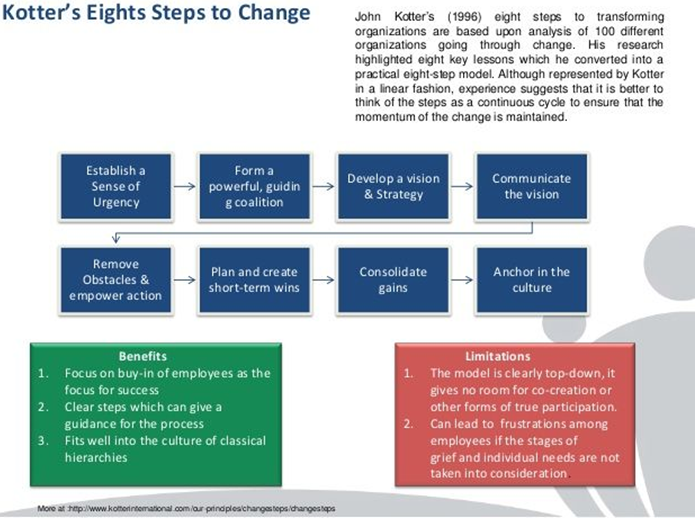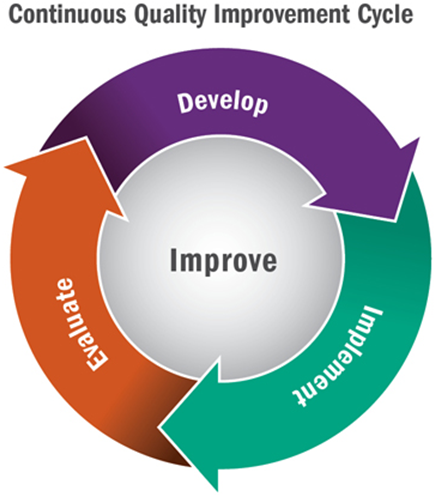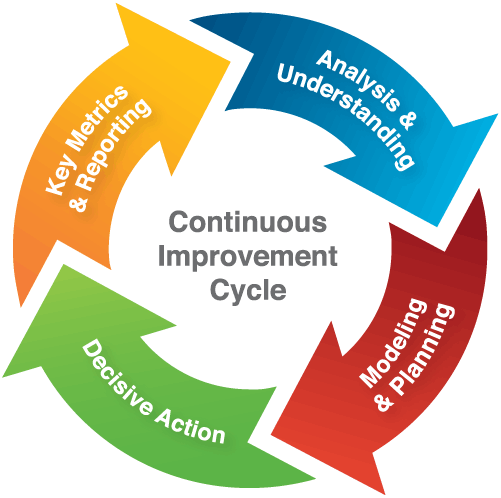Short Communication
Volume 1 Issue 2 - 2019
Staffing Plan for Meeting Recruitment Needs in Healthcare Related Occupations: Proposed Recommendations
Department of Teaching and Learning, American College of Education, 101 West Ohio St., Suite 1200, Indianapolis, IN 46204. USA
*Corresponding Author: Lisa Marie Portugal, Department of Teaching and Learning, American College of Education, 101 West Ohio St., Suite 1200, Indianapolis, IN 46204. USA.
Received: December 05, 2019; Published: December 14, 2019
Abstract
This discussion explains perceived staffing needs in healthcare related occupations and various knowledge, skills and abilities (KSAs) needed by employees. In addition, a staffing plan for meeting healthcare related occupational needs and recommended recruitment methods is examined.
Key words: Knowledge, Skills, Abilities, KSAs, Human Resource Management, HRM, Development Plan, Staffing, Training, HR, Learning, Education, Healthcare, Recruitment, Kotter’s Change Model, Leadership, Continuous Quality Improvement (CQI) Model.
Introduction
Kotter’s (1996) Change Model is discussed to address communication, empowerment, and feedback loops to foster vision and change for an employee training and recruitment plan in the healthcare industry. A Continuous Quality Improvement (CQI) Model can assist in improving the motivation and work life of healthcare employees via leadership, vision, and teamwork in a partnership relationship between healthcare employers and university healthcare programs, students, administrators, and stakeholders (Johnson, 2019). Appendix includes Kotter’s (1996) Change Model and Continuous Quality Improvement (CQI) Model.
Perceived Staffing Needs in Healthcare Related Occupations and KSAs Needed
According to the U.S. Department of Labor, Bureau of Labor Statistics on Employment Projections, “Of the 30 fastest growing occupations, 18 are in healthcare and related occupations. Increased demand for healthcare services from an aging population and people with chronic conditions will drive much of the expected employment growth. The fastest growing among these occupations are home health aides and personal care aides. Other healthcare occupations with rapid projected growth--including nurse practitioners, physician assistants, and medical assistants--will be in greater demand as the healthcare industry moves toward delivery of team-based care” (U.S. Department of Labor, 2019). Based upon these projections, universities can plan for healthcare degree programs with specific needs for KSAs for future student enrollment. Employers needing new positions and/or increased personnel for KSAs in healthcare related occupations can partner with universities addressing new degree tracks in healthcare programming and degree attainment. Specific KSAs for healthcare related occupations can include the following: (1) communication skills, (2) questioning skills, (3) advisement skills, and (4) high level cognitive thinking skills (Servellen, 2018; Zoller & Dutta, 2008).
According to the U.S. Department of Labor, Bureau of Labor Statistics on Employment Projections, “Of the 30 fastest growing occupations, 18 are in healthcare and related occupations. Increased demand for healthcare services from an aging population and people with chronic conditions will drive much of the expected employment growth. The fastest growing among these occupations are home health aides and personal care aides. Other healthcare occupations with rapid projected growth--including nurse practitioners, physician assistants, and medical assistants--will be in greater demand as the healthcare industry moves toward delivery of team-based care” (U.S. Department of Labor, 2019). Based upon these projections, universities can plan for healthcare degree programs with specific needs for KSAs for future student enrollment. Employers needing new positions and/or increased personnel for KSAs in healthcare related occupations can partner with universities addressing new degree tracks in healthcare programming and degree attainment. Specific KSAs for healthcare related occupations can include the following: (1) communication skills, (2) questioning skills, (3) advisement skills, and (4) high level cognitive thinking skills (Servellen, 2018; Zoller & Dutta, 2008).
Staffing Plan for Meeting Healthcare Related Occupations and KSAs Needed
According to van Servellen (2018), critical competencies in therapeutic communications involve: (1) the persuasive role of empathy, confirmation, and compassion; (2) communications that contribute to trust; (3) the art and skillful use of questions and questioning skills; (4) therapeutic use of silence and pauses; (5) managing and addressing the impact of patient self-disclosures; (6) the proper placement of advisement; (7) reflection and interpretation skills; and (8) the judicious use of confrontations, orders, and commands. Zoller and Dutta (2008) maintained that health communication can involve: (1) communication with patient, (2) communication with stakeholders, (3) communication in a scholarly manner and health communication research, and (4) understanding and mastery of health communication theory. For employers, a staffing plan for meeting needed KSAs in healthcare related occupations can include: (1) partnering with universities to assist in curriculum design for desired KSAs in the workplace, (2) partnering with universities to offer internships and on-the-job training for students and recent graduates, (3) recruiting and hiring graduates from a partnership network; (4) offering guidance, support, resources, and contacts; and (5) providing time, professional development opportunities, consultation, and guest speakers (Clark, 2013; Fadairo, Williams, & Maggio, 2013; Fallon & McConnell, 2014).
According to van Servellen (2018), critical competencies in therapeutic communications involve: (1) the persuasive role of empathy, confirmation, and compassion; (2) communications that contribute to trust; (3) the art and skillful use of questions and questioning skills; (4) therapeutic use of silence and pauses; (5) managing and addressing the impact of patient self-disclosures; (6) the proper placement of advisement; (7) reflection and interpretation skills; and (8) the judicious use of confrontations, orders, and commands. Zoller and Dutta (2008) maintained that health communication can involve: (1) communication with patient, (2) communication with stakeholders, (3) communication in a scholarly manner and health communication research, and (4) understanding and mastery of health communication theory. For employers, a staffing plan for meeting needed KSAs in healthcare related occupations can include: (1) partnering with universities to assist in curriculum design for desired KSAs in the workplace, (2) partnering with universities to offer internships and on-the-job training for students and recent graduates, (3) recruiting and hiring graduates from a partnership network; (4) offering guidance, support, resources, and contacts; and (5) providing time, professional development opportunities, consultation, and guest speakers (Clark, 2013; Fadairo, Williams, & Maggio, 2013; Fallon & McConnell, 2014).
Healthcare employers and universities can strategically partner to address employee recruitment needs using a process for creating significant change in eight-stages posited by Kotter (1996):
- Establish a sense of urgency.
- Create a guiding coalition.
- Develop a vision and strategy.
- Communicate the change vision.
- Empower broad-based action.
- Generate short-term wins.
- Consolidate gains and produce more change.
- Anchor new approaches in the culture (Johnson, 2019).
This model can present ideas for leadership, organizational culture, and teamwork in a mentoring - partnership initiative implementing successful Continuous Quality Improvement (CQI) for training and recruitment needs in the healthcare industry (Johnson, 2019). CQI in healthcare can foster a culture of excellence by addressing needed KSAs in the industry and partnering with universities to develop students into the type of employees that employers need to hire (Clark, 2013; Fadairo, Williams, & Maggio, 2013; Fallon & McConnell, 2014; Johnson, 2019).
Recommended Recruitment Methods
A consistent concern of the human resources professional is finding and retaining individuals with the talents, skills, and abilities needed by an organization. Recommended recruitment methods for employers seeking needed healthcare KSAs can include the following areas: (1) advertisment, (2) networking, (3) job fairs, (4) recruiting trips, (5) search firms, (6) the Internet, (7) promotion from within, (8) salary bumping, (9) recruiting during periods of shortage, (10) every employee is a recruiter concept, and (11) partnership relationship models with community, universities, and stakeholders to develop needed KSAs (Andersen & Minbaeva, 2013; Fallon & McConnell, 2014; Purcell & Boxall, 2016; Stewart & Brown, 2014). Other recruiting plans can include internships, paying for moving expenses, assisting spouses of candidates to secure appropriate employment, paying a signing bonus or finder’s fee, or making other, specialized arrangements to successfully recruit specific needed personnel (Fallon & McConnell, 2014). Finally, happy, satisfied employees are often an organization’s most effective recruiters.
A consistent concern of the human resources professional is finding and retaining individuals with the talents, skills, and abilities needed by an organization. Recommended recruitment methods for employers seeking needed healthcare KSAs can include the following areas: (1) advertisment, (2) networking, (3) job fairs, (4) recruiting trips, (5) search firms, (6) the Internet, (7) promotion from within, (8) salary bumping, (9) recruiting during periods of shortage, (10) every employee is a recruiter concept, and (11) partnership relationship models with community, universities, and stakeholders to develop needed KSAs (Andersen & Minbaeva, 2013; Fallon & McConnell, 2014; Purcell & Boxall, 2016; Stewart & Brown, 2014). Other recruiting plans can include internships, paying for moving expenses, assisting spouses of candidates to secure appropriate employment, paying a signing bonus or finder’s fee, or making other, specialized arrangements to successfully recruit specific needed personnel (Fallon & McConnell, 2014). Finally, happy, satisfied employees are often an organization’s most effective recruiters.
Conclusion
This discussion explained perceived staffing needs in healthcare related occupations and various knowledge, skills and abilities (KSAs) needed by employees. In addition, a staffing plan for meeting healthcare related occupational needs and recommended recruitment methods were examined. Kotter’s (1996) Change Model will be discussed to address communication, empowerment, and feedback loops to foster vision and change for an employee training and recruitment plan in the healthcare industry. A Continuous Quality Improvement (CQI) model can assist in improving the motivation and work life of healthcare employees via leadership, vision, and teamwork in a partnership relationship between healthcare employers and university healthcare programs, students, administrators, and stakeholders (Johnson, 2019). Appendix includes Kotter’s (1996) Change Model and Continuous Quality Improvement (CQI) Model.
Appendix

Adapted from Kotter, J. P. (1996). Leading change. Boston, MA: Harvard Business School Press.
Figure 1: Kotter’s (1996) Change Model #1
Figure 1: Kotter’s (1996) Change Model #1

Adapted from Kotter, J. P. (1996). Leading change. Boston, MA: Harvard Business School Press.
Figure 2: Kotter’s (1996) Change Model #2
Figure 2: Kotter’s (1996) Change Model #2

Adapted from Johnson, J. K. (2019). McLaughlin & Kaluzny's Continuous Quality Improvement in health care (5th edition). Burlington, MA: Jones & Bartlett Learning.
Figure 3: Continuous Quality Improvement (CQI) Model #1
Figure 3: Continuous Quality Improvement (CQI) Model #1

Adapted from Johnson, J. K. (2019). McLaughlin & Kaluzny's Continuous Quality Improvement in health care (5th edition). Burlington, MA: Jones & Bartlett Learning.
Figure 4: Continuous Quality Improvement (CQI) Model #2
Figure 4: Continuous Quality Improvement (CQI) Model #2
References
- Andersen, T. J., & Minbaeva, D. (2013). The role of human resource management in strategy making. Human Resource Management, 52(5), 809-827.
- Clark, A. B. (2013). Strategic staffing. Education Digest, 78(6), 26-30.
- Fadairo, S. A., Williams, R., & Maggio, E. (2013). Workforce planning and management. Journal of Government Financial Management, 62(4), 34-38.
- Fallon, F. & McConnell, C. R. (2014). Human resource management in health care (2nd edition). Burlington, MA: Jones & Bartlett Learning.
- Johnson, J. K. (2019). McLaughlin & Kaluzny's Continuous Quality Improvement in health care (5th edition.). Burlington, MA: Jones & Bartlett Learning.
- Kotter, J. P. (1996). Leading change. Boston, MA: Harvard Business School Press.
- Purcell, J., & Boxall, P. (2016). Strategy and human resource management (4th edition). New York, NY: Red Globe Press.
- Stewart, G. L., & Brown, K. G. (2014). Human resource management: Linking strategy to practice (3rd edition). Hoboken, NJ: Wiley.
- Van Servellen, G. (2018). Communication skills for the health care professional (3rd edition). Burlington, MA: Jones & Bartlett Learning.
- Zoller, H. & Dutta, M. J. (2008). Emerging perspectives in health communication: Meaning, culture, and power (1st edition). New York, NY: Routledge.
Citation: Lisa Marie Portugal. (2019). “Staffing Plan for Meeting Recruitment Needs in Healthcare Related Occupations: Proposed Recommendations”. Journal of Medicine and Surgical Sciences 1.2.
Copyright: © 2019 Lisa Marie Portugal. This is an open-access article distributed under the terms of the Creative Commons Attribution License, which permits unrestricted use, distribution, and reproduction in any medium, provided the original author and source are credited.
